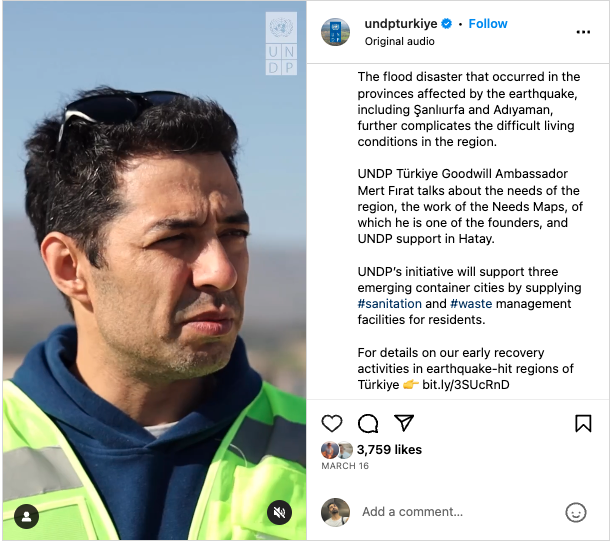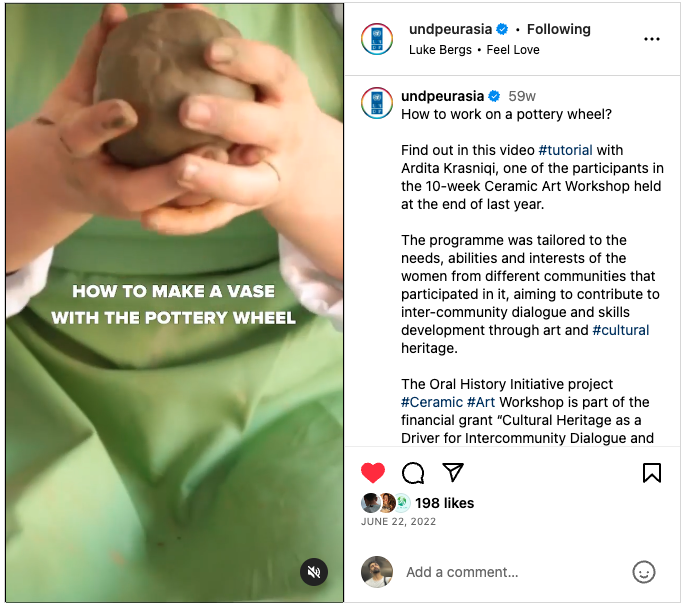How to have impact in a crowded digital market
10 tips to enhance social media presence for non-profits
August 10, 2023

Social media is a dynamic and fast-changing field, where new and old features, content types and platforms emerge and fade every day. In this roller coaster landscape of communications, we must be vigilant and spot algorithm updates, trends and foundational changes to social media’s best practices.
When it comes to advocating for development issues as a nonprofit, it is not easy in the crowded social media space. The attention span is bleeding. The organic reach is dropping.
So, have we lost control over our reach and our goals? Not quite yet! Here are my top ten secrets that can benefit anyone working in an iNGO or NGO environment.
1. Be social, be human
Amidst the noise and constant flow of content, it's important to remember this principle: be social, be human and use the power of two-way communication.
While our organizations may deal with serious global issues, adding a touch of humanity, and even humour, can go a long way. Transcending the robotic facade often associated with the UN by showcasing its human side not only adds personality but also makes your content more approachable. For instance, after the giant graphic design platform Canva directly interacted with me, I became its loyal fan on their X (Twitter) channel.
Don't be a passive broadcaster. Get engaged, use humour where appropriate, and initiate meaningful conversations to create a lasting impression. Show that behind the screen there are real people ready to listen and engage.
Remember, this is why it is called social media.
2. Rock with creativity
Don't be afraid to break from your usual routine and traditional content production. Try something new and unique to surprise your followers and partners, whether it’s a video, social media card, or even a simple social media text.
Use emojis to have some fun or dive into ASCII art, where the artful arrangement of text characters can catch the eye. When you are creative, your content grabs attention; your partners and followers can't resist sharing it.

3. Choose quality but be consistent
While consistency is vital, it should never come at the expense of quality. Think of it like building a fit and healthy body. You need to exercise regularly and eat well. Similarly, nurturing your social media presence demands regular posting and quality content.
Consistency helps establish a strong presence in the minds of your followers and gets rewarded by the algorithms. Don’t leave a long gap between posts, but remember, it's not about posting anything or just fulfilling requests from programme colleagues. It's about creating content that matters to the followers.
4. Work with Influencers
Support from goodwill ambassadors, influencers and micro-influencers can be powerful. They bring credibility, reach and passion to the cause, allowing us to increase its influence and impact. For example, during the earthquake crisis, UNDP Türkiye worked with renowned actor Mert Firat, to draw more public attention-driving engagement, donations and volunteer efforts.
But even our employees can be “micro-influencers” for our brand, our organization's voice and advocates. By using their influence, we can grow our presence organically while strengthening our employee community, making them feel prouder and more involved.

5. Treat channels differently
We can no longer stick to a one-size-fits-all approach to social media content for all channels. Sharing the same content on all platforms may seem easy and a time-saving trick, but it often leads to negative results, like lower engagement, fewer views and less impact. And we don’t use the full potential of the channel. Different channels are now targeting different people. Learn the unique characteristics of each social media channel and make your content fit them.
For example, LinkedIn targets a more professional audience while Instagram attracts younger people and works well with eye-catching content. You can't post a colourful IG dance reel on LinkedIn. It will look silly.
6. Invest in vertical short-form videos
They say a picture is worth a thousand words, but a video can be worth a thousand pictures if it’s well done. Recent statistics show that 5.44 billion people, or 68 percent of the global population, are mobile phone users as of early 2023. What's more, the average mobile user spends over 5 hours per day on their phone.
That's why vertical video like Tiktok, shorts and reels has taken the social media world by storm. Producing vertical videos on social media is not just a trend; it's a strategic move that matches the habits and preferences of today's mobile-centric audience.
Show something original, behind-the-scenes, tutorials, synced with beats or something humorous and tap into an audience beyond just your followers.

7. Set aside a budget
Social media users continue to grow, reaching 4.76 billion at the start of 2023. The latest stats show that we spend more time on social media than ever before. As such, it's crucial to fuel the flickering fire.
While traditional marketing like print or TV ads can drain our resources, social media offers a cost-effective channel to captivate and mobilize a vast audience, with many capabilities that traditional marketing doesn’t provide. So why hesitate to set aside a budget?
8. Choose the right time
After following all the above tips, don't waste the hard work by posting at the wrong time. Finding the right time is not magic or luck, but data. Understand and use that data to give your post the engagement it deserves.
For example, @UNDPEurasia learned that the best times to post were in the late afternoon on X (Twitter) and early morning on LinkedIn, with no engagement during weekends.
9. Measure and adapt
Social media management needs constant monitoring, adaptation and experimentation to stay ahead of the ever-changing trends.
At UNDP Eurasia, we do daily random checks and monthly reviews to observe our performance and find out what works and what doesn't (for us). What do the followers like? What don't they like? Which posts get the most engagement, and which ones don't? We need to know the answers to these questions to figure out how to hit the spot.
10. Keep in the balance
We all need to acknowledge donors, but too much promotion could alienate your audience. Or you may get requests from colleagues that are not suitable for social media.
You can use storytelling to show the impact of partners' contributions, or develop and join social media campaigns with them. For project colleagues, educate them about your audience's interests and preferences and offer alternatives that are more social. For example, instead of a round-the-table meeting or a handshake, share a behind-the-scenes moment with your partner. Lastly, consider frequency and timing to avoid overwhelming your audience with promotional posts.
Bonus tip!Use a pinch of AI
AI is like today’s calculator – use it or miss out. GPT virtual assistants like Bard, Bing and ChatGPT come in handy to save you some time.
As far as you comply with your organisation policies such as the Personal Data Protection and Privacy Policy and Information Classification and Handling Policy, GPTs can be there for you as a free virtual assistant. Use it as a second pair of eyes, improve your copy, do content batching, and quickly align copy to different tones, channels and target audiences.
Learn more about making AI work for us.
Remember, what works for UNDP might not work for other organisations. The key is finding out what works best for you, by testing and monitoring the results. Follow these tips, and let me know your experience or if there is something that worked better for you.

 Locations
Locations